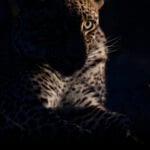
TRIP REPORT: PREDATORS OF SABI SABI AND MALA MALA
10 December 2024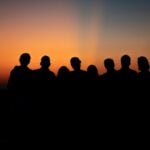
FAMILY FRIENDLY AFRICAN SAFARIS
14 December 2024
TRIP REPORT: PREDATORS OF SABI SABI AND MALA MALA
10 December 2024
FAMILY FRIENDLY AFRICAN SAFARIS
14 December 2024PHOTOGRAPHY TIPS
TIPS FOR PHOTOGRAPHING
JAGUARS OF THE PANTANAL
Having just returned from my very first trip to Brazil's Pantanal where our group spent 9 nights exploring the rivers and channels around Porto Jofre, I though that rather than pulling together a trip report, I'd share my tips for photographing Jaguars of the Pantanal with you all.
Besides, if you're planning to visit this part of the world or will be heading there soon, I have no doubt that you'll find some of my tips and insight useful!
What Focal Lengths are best for Photographing Jaguars of the Pantanal?
The go to for me would be the 80-400/100-400/100-500mm lenses and ranges. In my opinion these are your absolute sweet spot for capturing a wide range of scenes and behaviour. Relatively small, lightweight and versatile, there’s very little action that you’ll miss with one of these lenses.
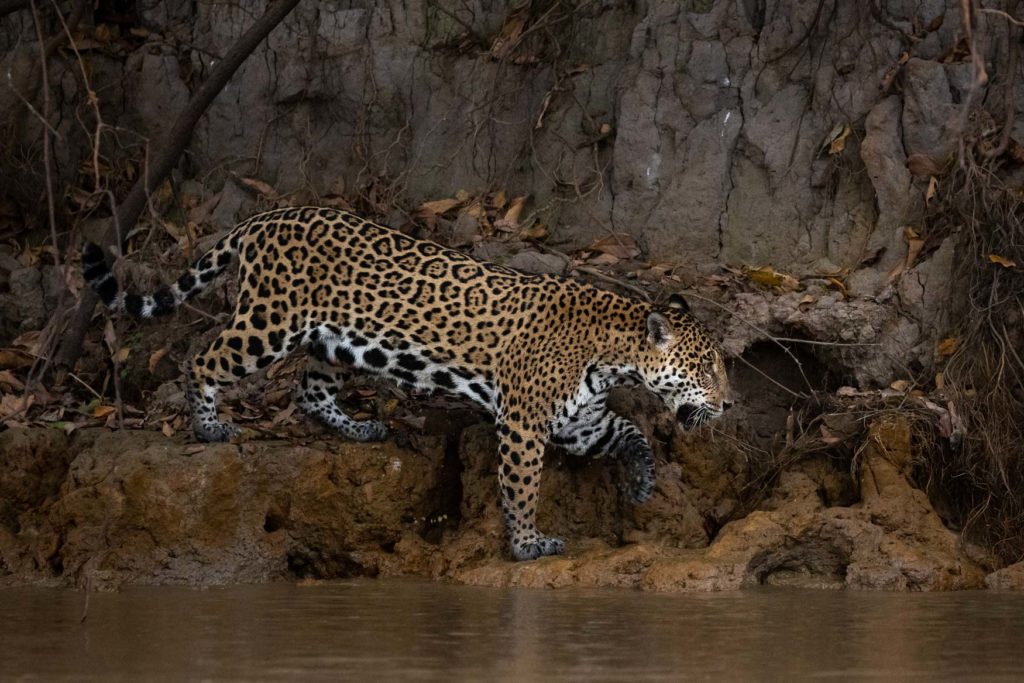
A Jaguar photographed on the Three Brothers River at 312mm
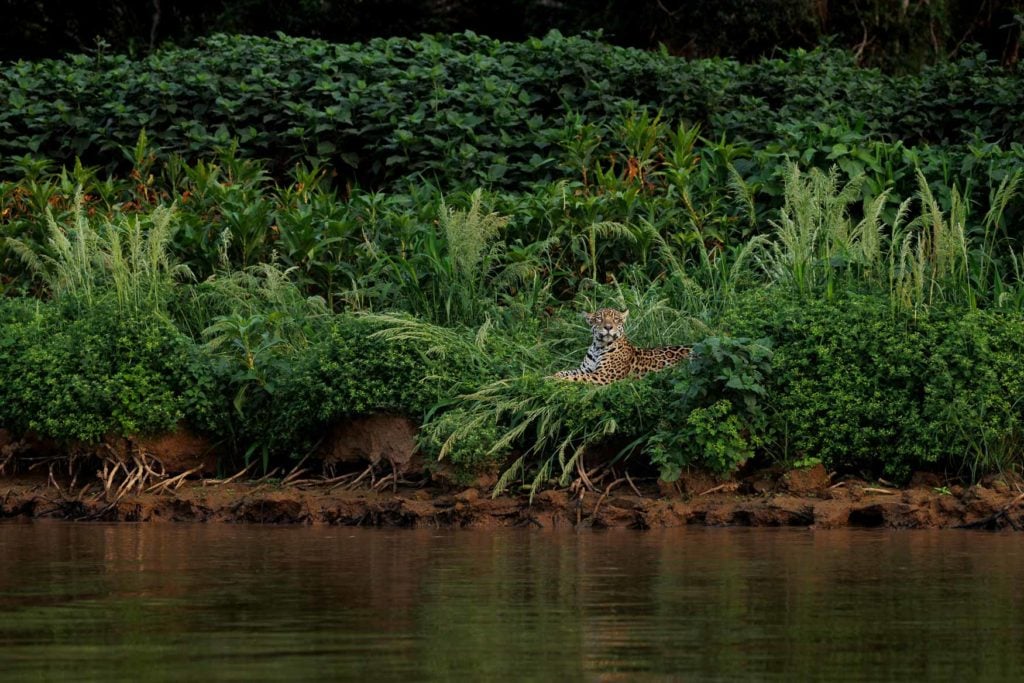
A young Jaguar photographed at 153mm along the Cuiabá River.
For tighter portraits, anything from 600mm to 800mm will be great and, if at all possible, I would try and set this up on a second body. My personal preference and recommendation would be to get your hands on a 400mm F2.8 and then pair this with the 2x converter to give you 800mm. A 1.4x converter would allow you to shoot at 600mm and then, should the need arise, you’ll be able to capture incredible portraits at 400mm and benefit from the optics and bokeh of this prime lens at larger aperture values like F 2.8-F4.0. This is something you wouldn't be able to do at 400mm on the 80-400/100-400mm type lens.
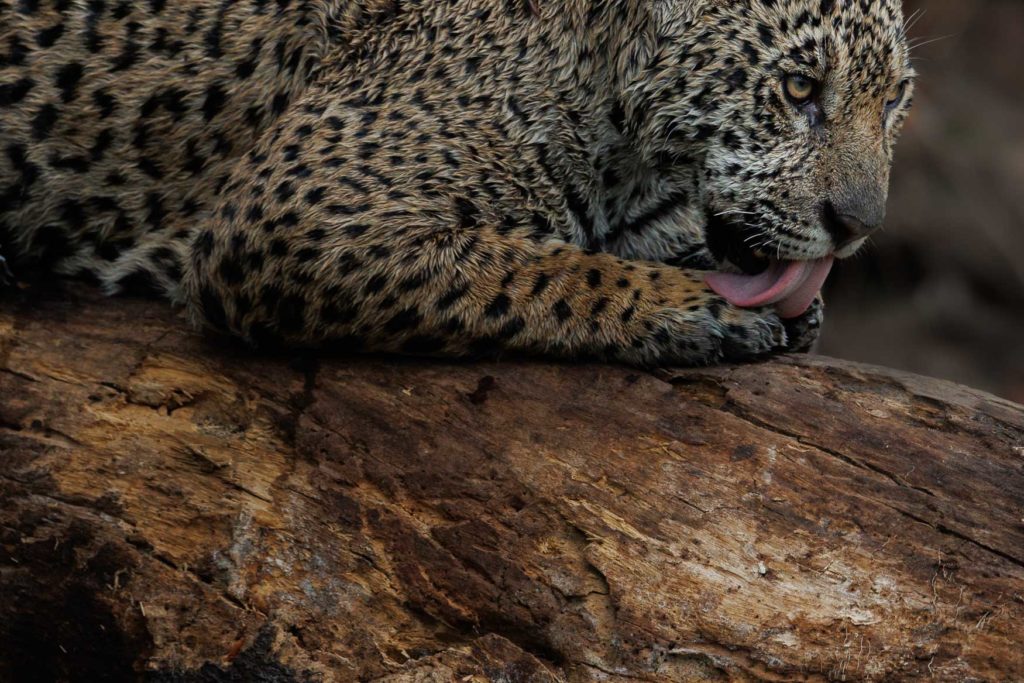
A tighter portrait of a Jaguar grooming itself in the Black Channel (Corixo Negro).
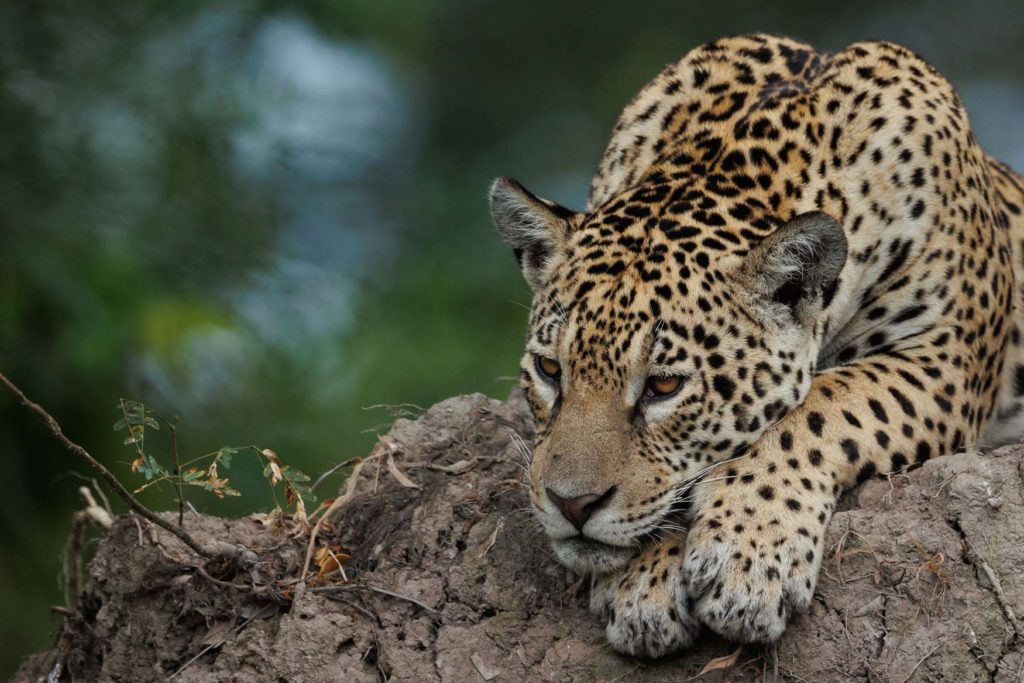
I love the separation between subject and background that one is able to achieve with a greater focal length like 600mm.
This sort of focal length (600mm to 800mm) is also ideal for capturing some of the smaller, but equally impressive species to be fund in the Pantanal. Believe it or not, its not all about Jaguars.
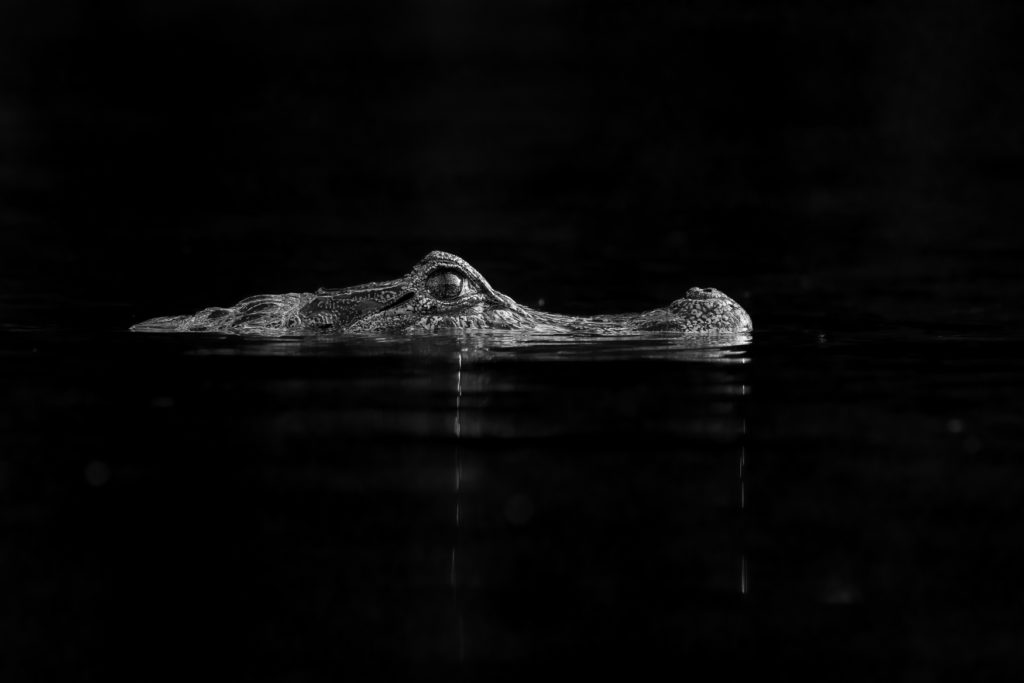
A Caiman, one of the key prey species for the Jaguars of the Pantanal
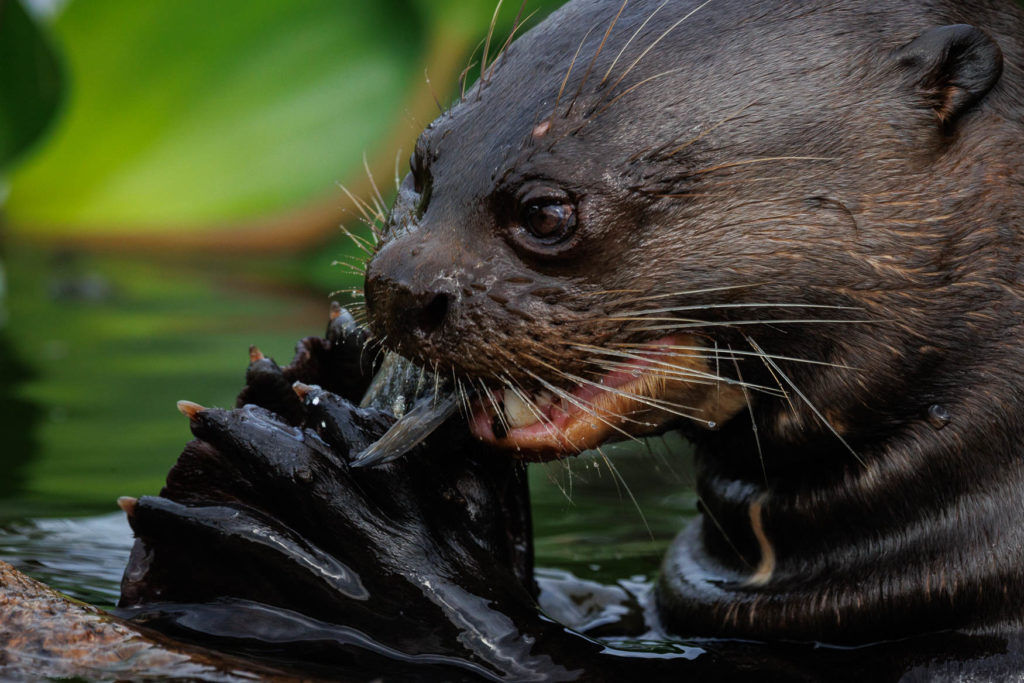
A Giant River Otter devouring a fish right next to our boat made for great photo opportunities
For photographing Jaguars of the Pantanal in their environment and placing them in context, very rarely will did I find myself wanting anything wider than 100mm and, when I did, I simply grabbed a couple of frames to stitch together in Lightroom as a panorama (see this blog post for more on that). There was one occasion where I would have loved the 85mm F 1.2 BUT this was for a very specific moment and scene which we only ever encountered once.
Shooting panoramas is a great option not just for the bigger picture, but for adding a little bit more context to images captured with a greater focal length. Not only do you benefit from the shallower depth of field obtained when shooting with a greater focal length, but you end up with a pixel rich image which showcases more of the environment (without it being too distracting).
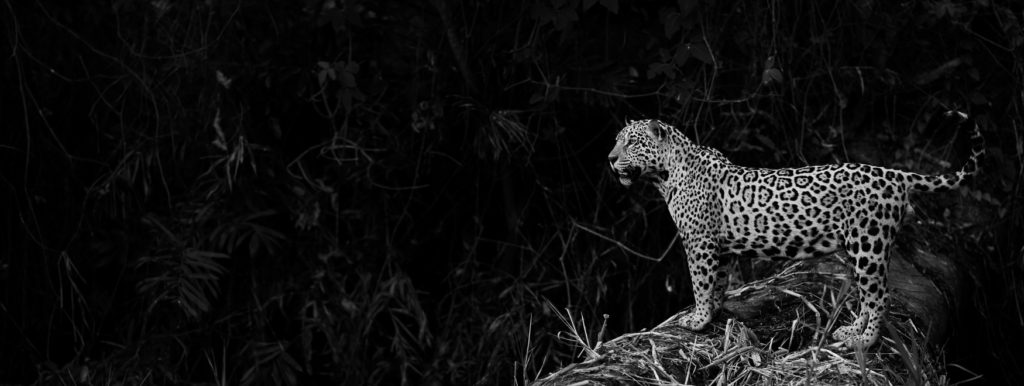
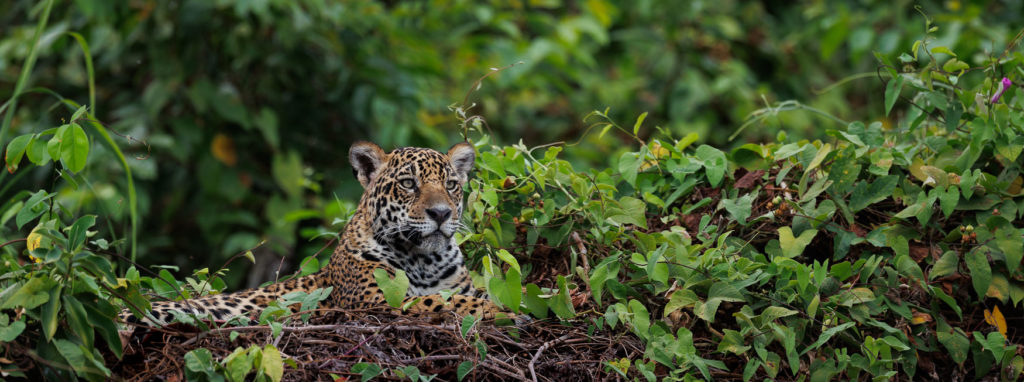
A two image Panorama captured at 600mm and stitched together in Lightroom.
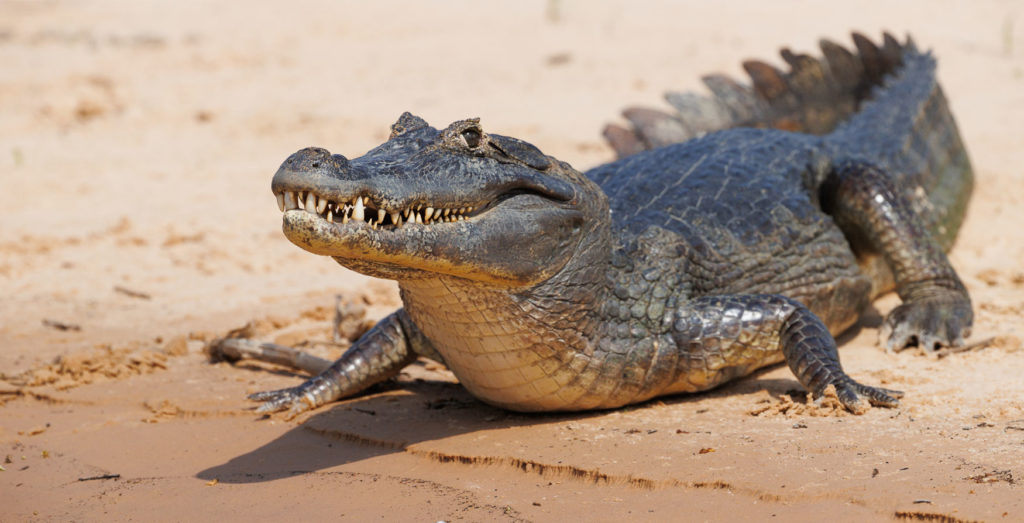
A two image Panorama of a Caiman captured at 600mm and stitched together in Lightroom.
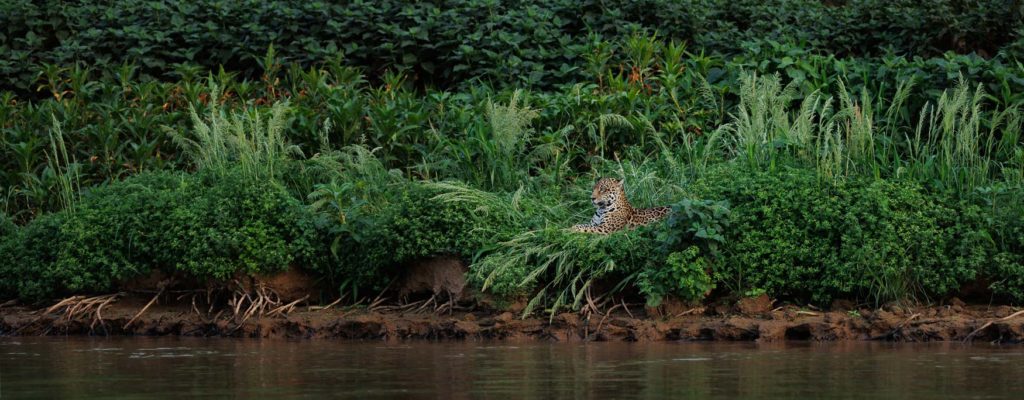
A two image Panorama captured at 200mm and stitched together in Lightroom
Camera Setting for Photographing Jaguars in the Pantanal
Exposure Compensation
Trust me on this one and look at using at least a -2/3 EV compensation when working with the jaguars in the Pantanal in amongst the dark green vegetation. Remember that the camera wants to keep everything grey and that the green vegetation is a whole lot darker than grey. To avoid having blown details on your subject (which has a lot of white on the chest) you’ll need to consciously underexpose and keep the greens and deep shadows nice and rich.
Speaking of shadows, there’s a lot of these and the jaguars are often resting or moving in deep shade. The shadows can be leveraged to create some striking low key images by running your exposure compensation deep into the negative (to keep darks dark).
Shutter Speeds
No surprises here but, with all the movement and rocking of the boat, coupled with the movement and potential hunting sequence of your subject, you’re going to crank those shutter speeds for a lot of the photographic opportunities. I’d work with anything from 1/1600 up to 1/2500 for action shots and general movement. Of course, light permitting, you can’t have too fast a shutter speed.
Aperture values
In addition to the usual considerations for depth of field etc etc, you’ll need to be aware of the fact that the jaguars are often moving behind or through dense vegetation. You’ll need to be accurate with your AF point placement and even then, I’d suggest giving yourself a little bit more margin for error incase the camera locks onto a piece of vegetation. Rather than shooting wide open, consider stopping down to f7.1 or f8.0. This will apply to any hunting action too where white water splashes my draw the cameras focus off of the subject momentarily.
Working with the Last Light of Day
On the off chance that you’re able to work the last light of day with a sighting close to your home base, I’d encourage you to think about panning and, rather than fighting the light with ISO, working with the light to create something different. Experiment with shutter speeds from 1/30 all the way down to 1/4 of a second and be sure to shoot a burst of images - only a few of these images will come out anywhere near the way you would want them to! You just need 1 though...
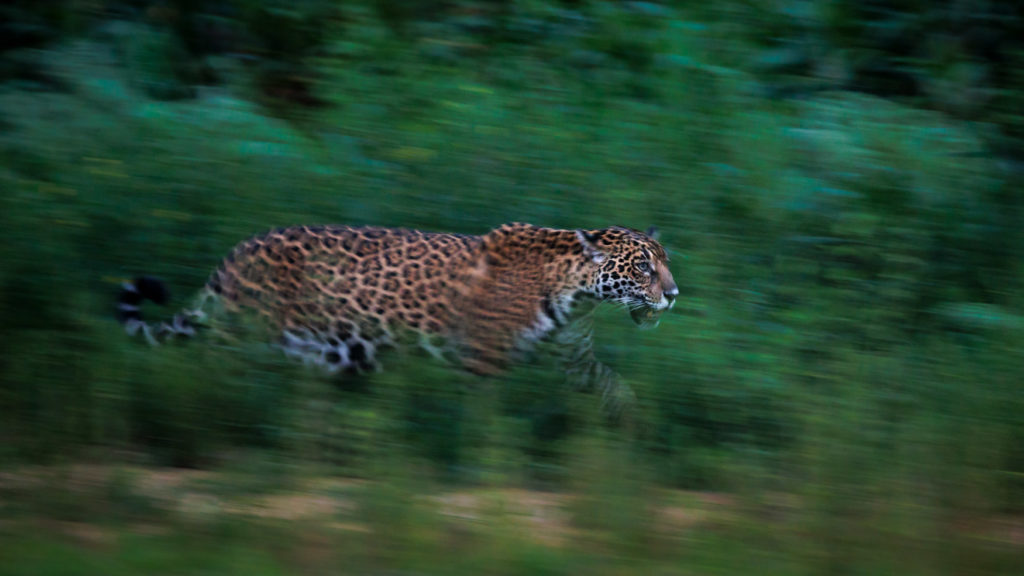
Panning at 400mm and 1/8th of a second in the last light of day (ISO4000)
Monopods and Tripods?
I saw several boats where photographers were using tripods, and I honestly can’t see how that will work for the overwhelming majority of situations you’ll be facing. Aside from the wake from other boats, gentle rocking (all exaggerated through your 400, 500, 600 or 800mm lens), it’s just way too limiting to be of any value in my mind.
You need to be flexible and free to move around as much as possible, sometimes it’s just 20cm to the right to get the angle behind a branch or over the shoulder of a guest on another boat. The last thing you can afford is to miss out on an opportunity.
Our local guide has seen tripods, cameras and lenses topple into the river and I can easily see how it can happen.
A monopod is a much better and more versatile option for the bigger glass but even here, the vibration from the boat and the link to any and all movement of the boat will prove to be frustrating. Where a monopod is handy is when you aren’t strong enough to hold the big glass up for extended periods of time. Rather than shooting with it braced on the boat (where it will pick up vibrations and any movement) it’s a great way to keep the camera readily accessible for moments of action. Finding the subject from chest height will be a lot easier than swinging the whole rig up from your side to shoot.
Long story short, I wouldn’t recommend either of these options. Get into the gym and get used to holding that longer glass for extend periods of time or simply work with the smaller and more versatile focal lengths like the 80-400/100-500. Either which way, I think you’ll thank me later!
Staying Comfortable
You'll be spending roughly 10 hours a day out on the river, exploring the various channels in search of the Jaguars. Unlike most of Africa's big cats, Jaguars are most active during the day and they're not bothered by the heat. This means you'll need a couple of items to ensure that you are as comfortable as possible when you're out photographing the Jaguars of the Pantanal.
- A large Waterbottle (we provide this for our guests on our safaris)
- Electrolytes or Rehydrate sachets
- Sunscreen (factor 50+)
- A dedicated UV protective Buff and possibly even sun-gloves
- A Wide brimmed hat
- Umbrella (Also provided by us for our guests on our Pantanal Tours)
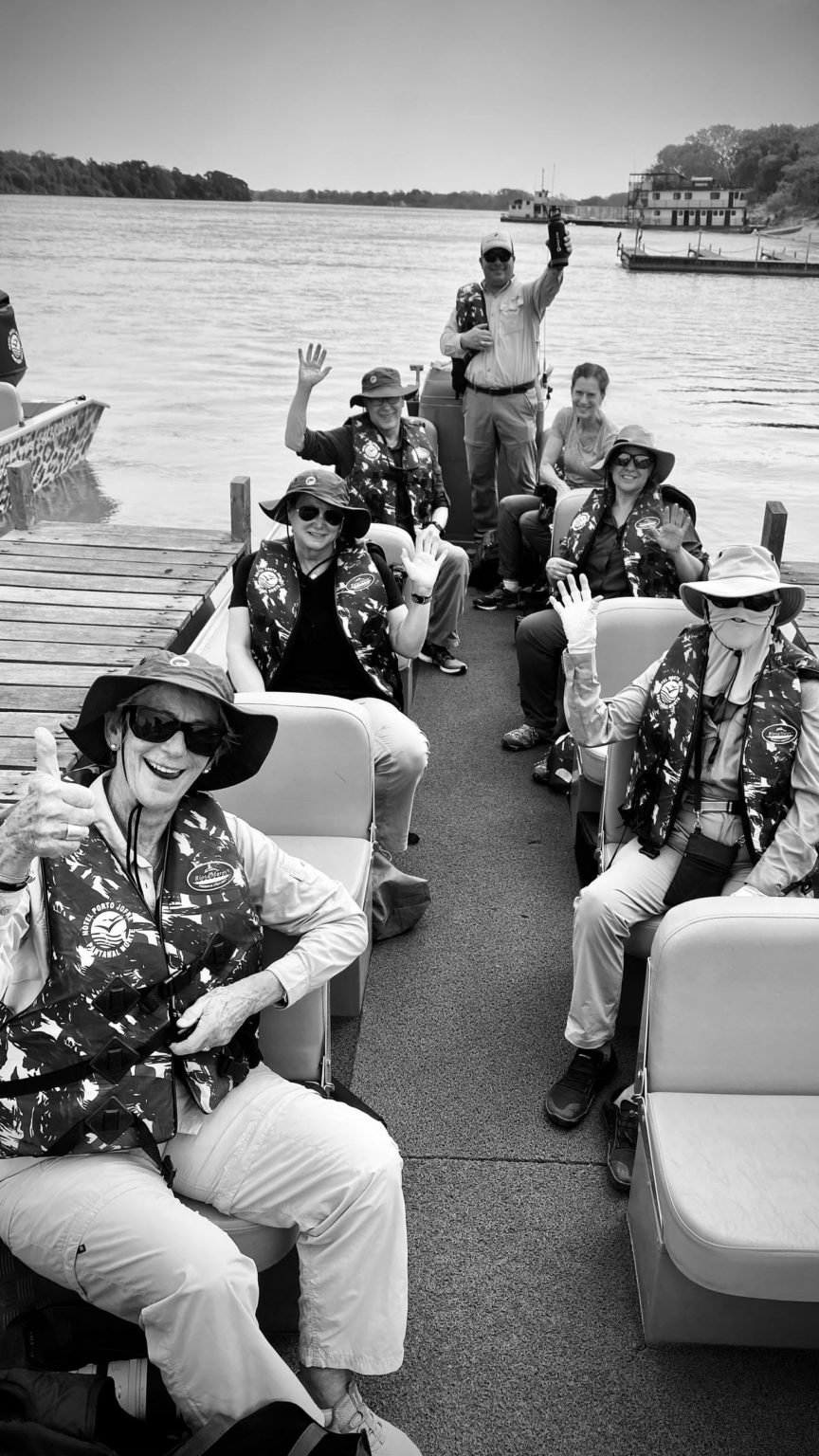
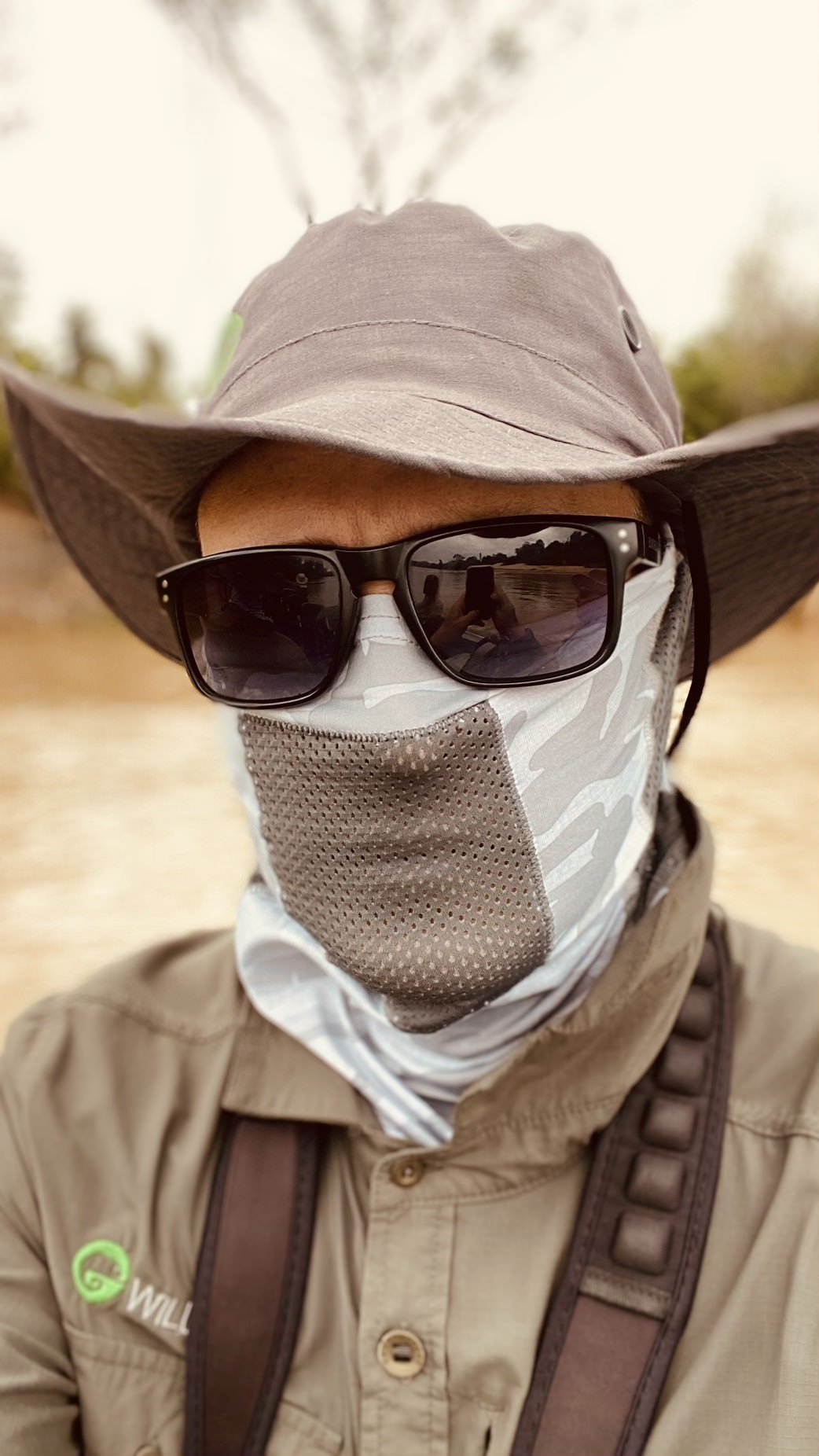
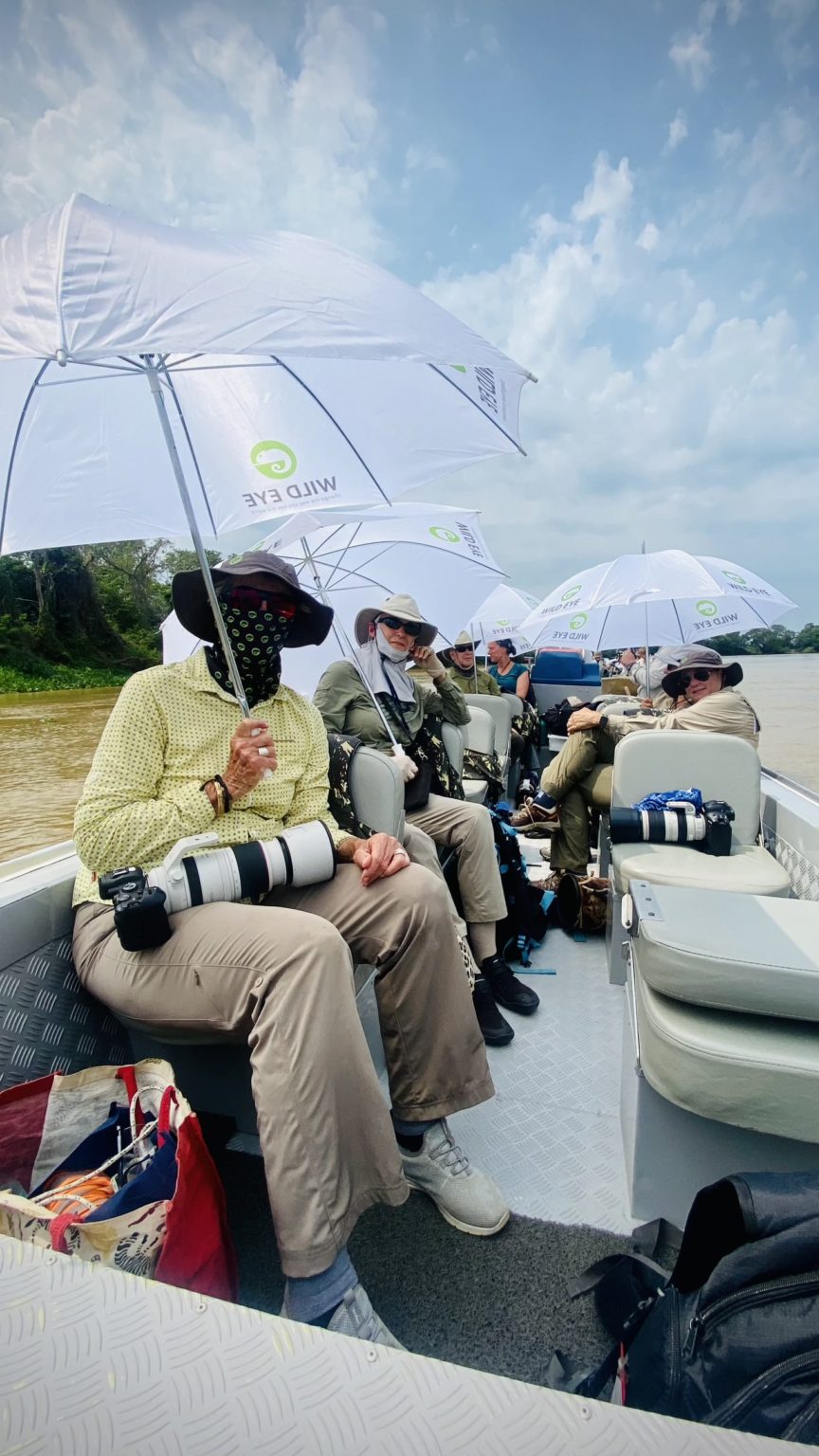
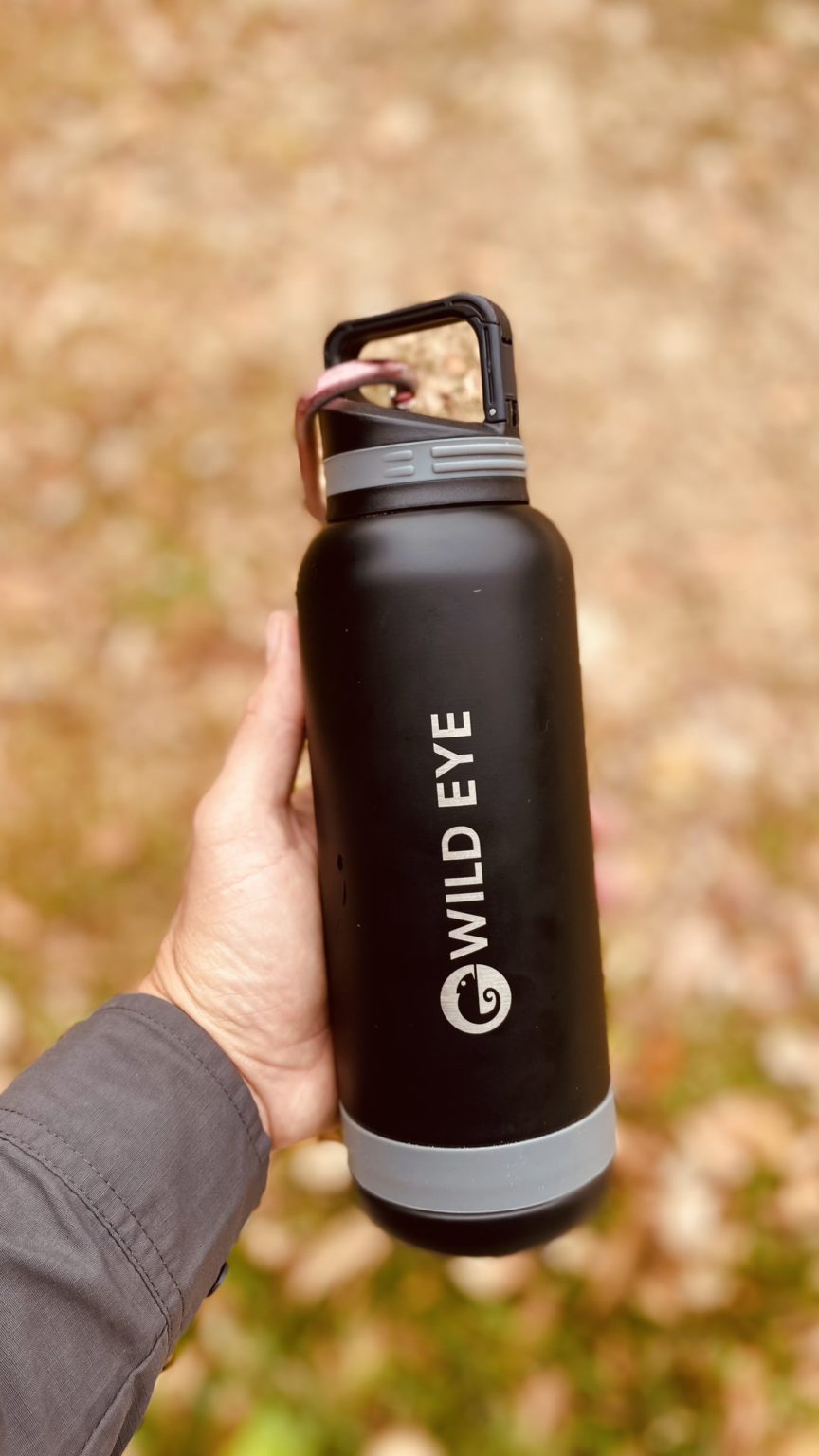
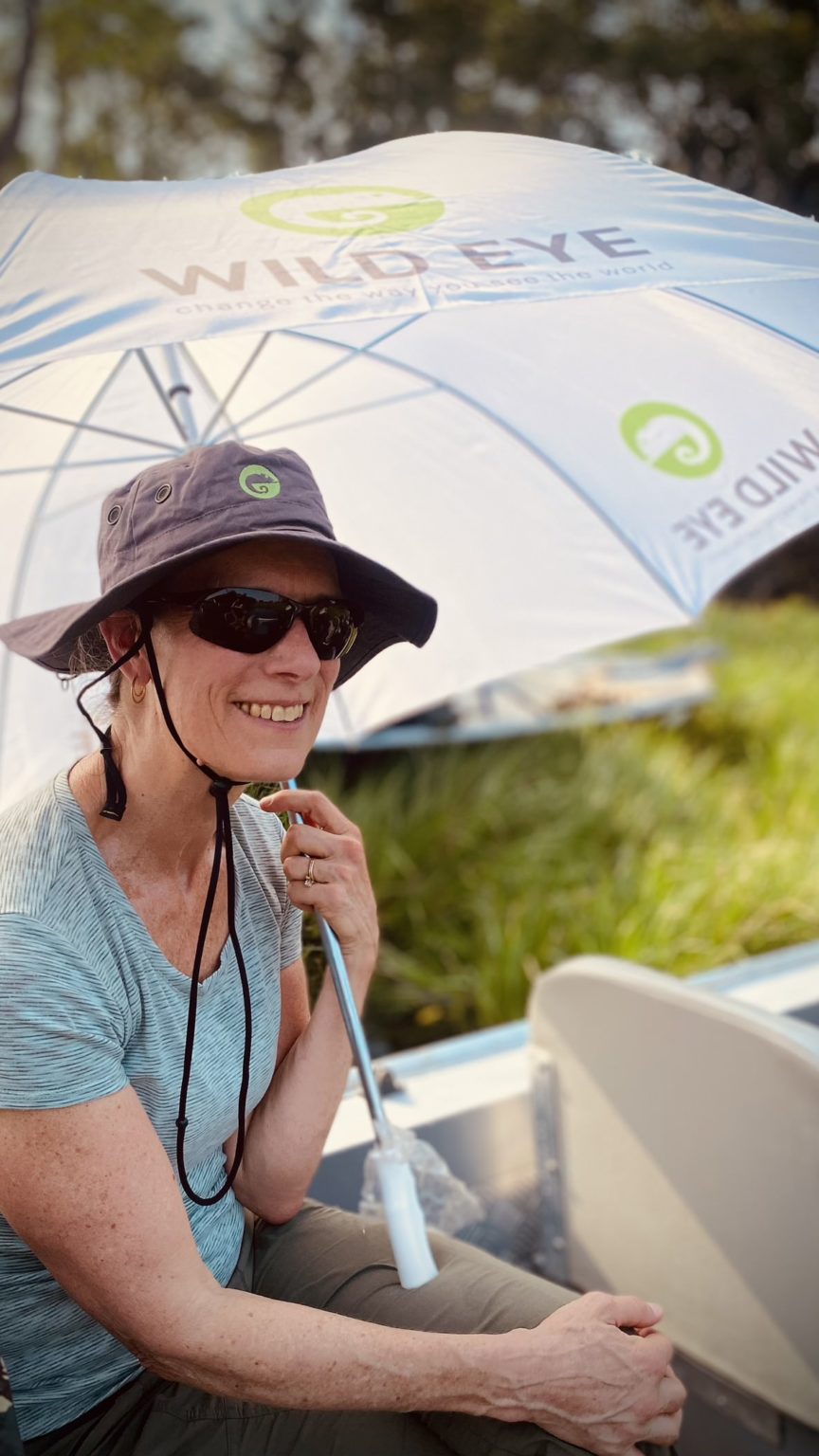
A final plea for when you must pee…
If you are reading this, I’m assuming you’re one of the more well informed and discerning travellers who truly appreciate wildlife and the natural habitats in which they occur. I’d like to encourage you to pack your own little bag for those important “comfort stops,” “bio breaks” and “pit stops.”
The amount of used toilet paper left behind the small shrubs that are regularly used by people to relieve themselves is concerning and disgusting.
A small Ziplock bag with a couple of brown paper bags, some tissues/toilet paper and some hand sanitizer will go a long way to helping preserve this area and keeping it as natural as possible. I’d encourage you to rather be prepared and take used toilet paper back out with you instead of having no other option but to leave it in the field.
This is something that I’m sure the operators in the region will start implementing and providing for their guests in the not-too-distant future but, in the meantime, please play your part!
Highlights of My Recent Trip to Photograph Jaguars of The Pantanal

I was very fortunate that my love for the bush and conservation took me on journey which would not only allow me to explore the continent which fascinates me so much, but to share my passion for photography and conservation with others.
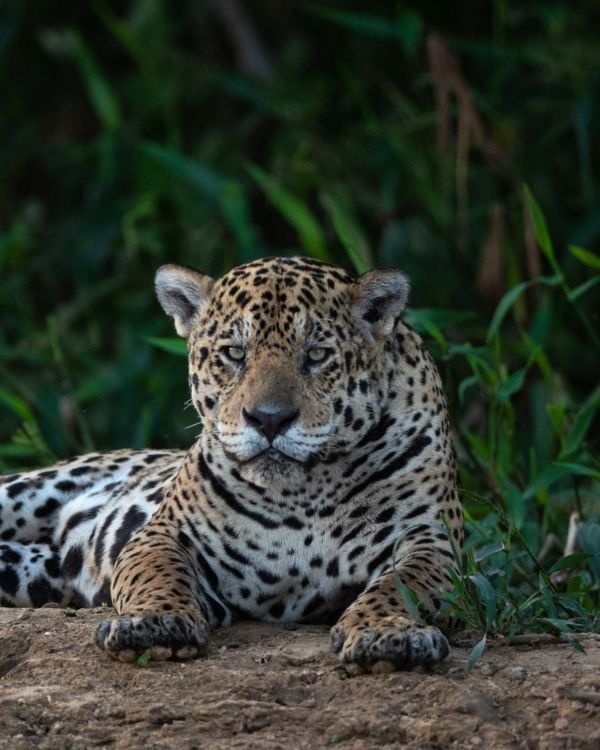
PHOTOGRAPH JAGUARS IN THE PANTANAL
Would you like to join Wild Eye on our Jaguars of The Pantanal Safari? One of our expert photographic guides will join you and help you create a diverse portfolio of images just like the stunning photographs above that Andrew captured. You can find out more about the trip by exploring the tour page below.
